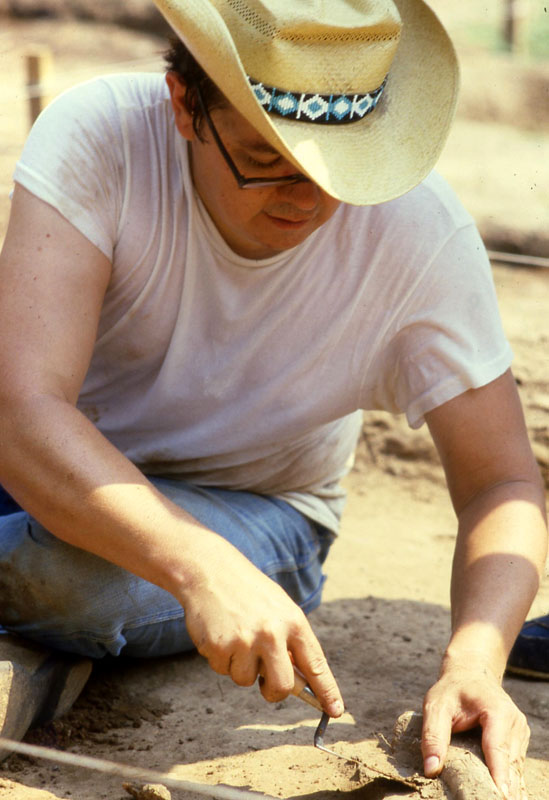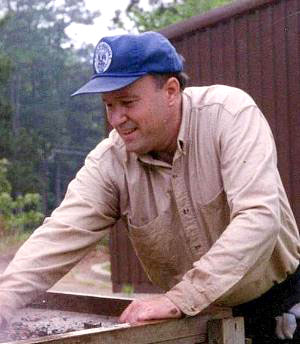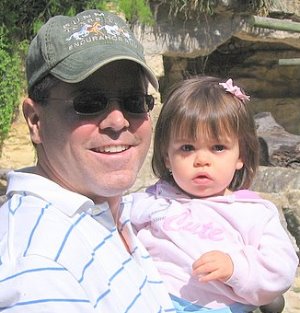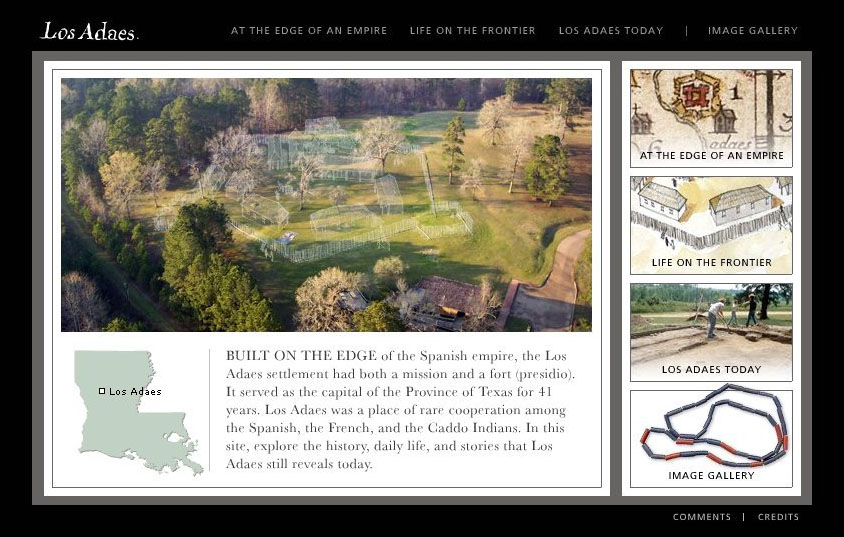Credits and Sources
|
This exhibit is the work of many. Hiram F. (Pete) Gregory, George Avery, Francis X. Galán, and Steve Black are the primary authors. Additional writing was contributed by Mariah Wade (on the Adais), Jay C. Blaine (on metal artifacts), and Aubra L. Lee (on archeology). TBH Co-Editor Steve Black created the exhibit with the help of TBH web developer Heather Smith, who crafted many of the exhibit graphics. The Los Adaes exhibit was underwritten by a grant from the Coypu Foundation (founded by John Stauffer McIlhenny) of Louisiana with additional support coming from individual members of the Texas Archeological Society, the Instructional Technology Services of the College of Liberal Arts at the University of Texas at Austin, and the Louisiana Division of Archaeology of the Department of Culture, Recreation, and Tourism. Pete Gregory is professor of anthropology at Northwestern State University (NSU) in Natchitoches. Gregory carried out excavations at Los Adaes between 1966 and 1986. His early work was part of his dissertation research at Southern Methodist University. Later investigations were funded by the State of Louisiana through the Louisiana Office of State Parks. Throughout his work Gregory has carried out archeological field schools at Los Adaes during which NSU undergraduate and graduate students have gained training while contributing to the research. Graduate students, such as Aubra Lee, have carried out additional research on the Los Adaes collections, which are housed at the Williamson Museum at Northwestern State University. George Avery served as Los Adaes Station Archaeologist for the Louisiana Division of Archaeology between 1995 and 2005 based out of Northwestern State University in Natchitoches, Louisiana. Avery carried out management-related fieldwork at Los Adaes as well as archival research, and is currently working on a compilation of the site's extensive archeological collections. All archeological fieldwork at Los Adaes was coordinated, as much as possible, with the visits of school groups. Lab work was done by NSU undergraduate students in the NSU Archaeology Lab in the Williamson Museum. Francis X. Galán teaches at Northwest Vista College and Our Lady of the Lake University in San Antonio. His recent (2006) dissertation from the Department of History at Southern Methodist University examines the history of the 18th-century Los Adaes community based on extensive archival research. He tracked down and translated many obscure documents relating to Los Adaes. Most of the archival quotes in this exhibit are Galán's translations. His disseration is the basis for a forthcoming book on Los Adaes from Texas A&M Press as well as several journal articles. Mariah F. Wade is assistant professor of anthropology at the University of Texas at Austin. She is a specialist in ethnohistory and has been researching the history of the Adai Indians for whom Los Adaes was named. Jay C. Blaine is a metal conservation expert who lives in Allen, Texas. He has been involved in the identification and conservation of the metal artifacts from Los Adaes since 1970. Blaine has conserved metal artifacts from many Spanish and French colonial archeological sites in Texas and adjacent states. Aubra L. Lee analyzed the plant and animal remains from several houses excavated at Los Adaes as part of thesis research at Northwestern State University. His work contributed to the interpretation of the Southeastern House Complex (House of the Curandera). Most of the unattributed photographs in this exhibit were provided by George Avery and Pete Gregory from the Los Adaes archives at the Williamson Museum at Northwestern State University. Don Sepulvado served as chief photographer for all of the excavations carried out by Gregory and has photographed the Los Adaes artifacts as well. Nancy Hawkins of the Louisiana Division of Archaeology provided much needed help with image permissions and licensing. Many others provided assistance. Among these: Chief Rufus Davis hosted a visit to the Adai Indian Nation Cultural Center and provided information about Adai heritage; Lee Johnson translated the legend and profile text on Urrutia's map; Pamela Hogan at the Department of Anthropology at Southern Methodist University scanned drawings from Gregory's 1993 dissertation; Jeff Girard provided images and information; Robert Norment provided photographs and information; and Ken Brown helped with the technical editing. The Center for American History at the University of Texas at Austin provided scans of documents from the Bexar Archives. Readers should know that this is not the only online exhibit on Los Adaes. The state of Louisiana has created a beautifully designed that tells some of the same story in a different form. This graphically innovative exhibit is well worth a visit and might even give you all you want to know. Ours tells more of the story in words and provides many new images and linked documents. We think the two exhibits complement each other and we encourage you to explore both. Links: Los Adaes: Life at an Eighteenth-Century Spanish Outpost Handbook of Texas Online David Rumsey Map Collection Library of Congress Map Collection, American Memory Briscoe Center for American History at The University of Texas at Austin holds the massive Bexar Archives, records of Spanish Colonial government and mission activity in Texas, and historic maps. Print Sources:Abernathy, Francis Armistead, Samuel G. Armistead, Samuel G. and Hiram F. Gregory Avery, George 1996 Archival investigations of the people of Los Adaes. Southern Studies 7(1):65-88. Download 1997 More Friend than Foe: Eighteenth Century Spanish, French, and Caddoan Interaction at Los Adaes, A Capital of Texas Located in Northwestern Louisiana. Louisiana Archaeology 22:163-193. Berthelot, Raymond Octave 1996 The Presidio Nuestra Señora del Pilar de los Adaes and the Spanish Colonial Presence in Northwestern Louisiana. Southern Studies 7(1):25-43. Download Blaine, Jay C. 1996 (With George Avery) Conservation and Indentification of Metal Artifacts from Los Adaes. Southern Studies 7(1):97-119. Download Bolton, Herbert E. 1987 The Hasinais: Southern Caddoans as Seen by the Earliest Europeans. Edited by Russell M. Magnaghi. University of Oklahoma Press, Norman. Carter, Cecile Elkins Chipman, Donald E. and Harriett D. Joseph Corbin, James E., Thomas C. Alex, and Arlan Kalina. Galán, Francis X. Gregory, Hiram F. 1983 Los Adaes, the Archaeology of an Ethnic Enclave. In Historical Archaeology of the Eastern United States, edited by Robert W. Neuman. School of Geoscience, Louisiana State University, Baton Rouge. 1996 Adaese Gregory, Hiram F. (editor) 1982 Excavations 1981-82, Presidio de Nuestra Se 1983 Los Adaes: The Archaeology of An Ethnic Enclave. Geoscience and Man 23:53 -57 1984 Excavations: Presidio de Nuestra Se 1985 Excavations, Unit 227, Presidio Nuestra Se Gregory, H. F., George Avery, Aubra L. Lee, and Jay C. Blaine Gregory, Hiram F. and James McCorkle Jackson, Jack 1998 Shooting the Sun: Cartographic Results of Military Activities in Texas, 1689-1829. Book Club of Texas. Jackson, Jack, ed. and William C. Foster, annotator John, Elizabeth A. H. Lee, Aubra L. Lemée, Patricia R. Lemmon, Alfred E., John T. Magill, and Jason R. Wiese Lipski, John Loren, Diana DiPaolo 1999 Creating Social Distinction: Articulating Colonial Policies and Practices along the Eighteenth-Century Louisiana/Texas Frontier. Doctoral dissertation, Department of Anthropology, State University of New York, Binghamton. University Microfilms Internation, Ann Arbor, MI. 2001 Manipulating Bodies and Emerging Traditions at the Los Adaes Presidio. In: The Archaeology of Traditions: Agency and History before and after Columbus, edited by Timothy R. Pauketat, pp. 58-76. University of Florida Press, Gainesville. Magnaghi, Russell M. McCorkle, James McDonald, Archie Nardini, Louis R., Sr. Pagés, Pierre Marie François de Perttula, Timothy K. Perttula, Timothy K. and Bo Nelson Phares, Ross Sepulvado, Don L. Sibley, John. Stark, Louisa Swanton, John R. Voellinger, Leonard R. |
|




